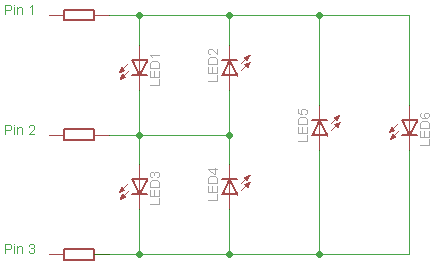
Given the above circuit and the value of either A, B, or C, and given f and g, we want to find the values of the other two resistors. f and g are defined as follows:
You will notice that if we multiply Eq.1 and Eq.2 by source voltage VS on either side of the equation we get the voltage divider equations. But we don't need VS to find the resistor values.
We first solve for A in both equations.
For Eq.1
For Eq.2
Equating Eq.3 and Eq.4 we have
We then solve for either B or C. Let's do B first.
Thus,
Using Eq.3 and substituting Eq.6 for C we have
Thus,
Using Eq.3 and substituting Eq.5 for B we have
Thus,
Eq.3 and Eq.4 gave us A in terms of B and C. Using these sames equations we can also find B in terms of A and C, and C in terms of A and B. The derivation is trivial so only the results are provided below.
So there you have it--all the equations necessary to find the resistor values given any of them. In my case I still needed the spreadsheet to help me find values that are commercially available. I plugged in a couple of the equations in the spreadsheet, and then by choosing different values for B given f = 2 and g = 10, I eventually got A = 15K, C = 3K, given B = 12K. Those are values readily available for 5% resistors.
---
Note: I used Codecogs' LaTeX Equation Editor to produce the images for the equations above. Am a newbie to Latex and have no idea how to pad spaces to move "Eq." towards the right. With a bit of trial and error I found that placing x number of "\ ", that's forward slash and then a blank space, will force x number of blank spaces.


